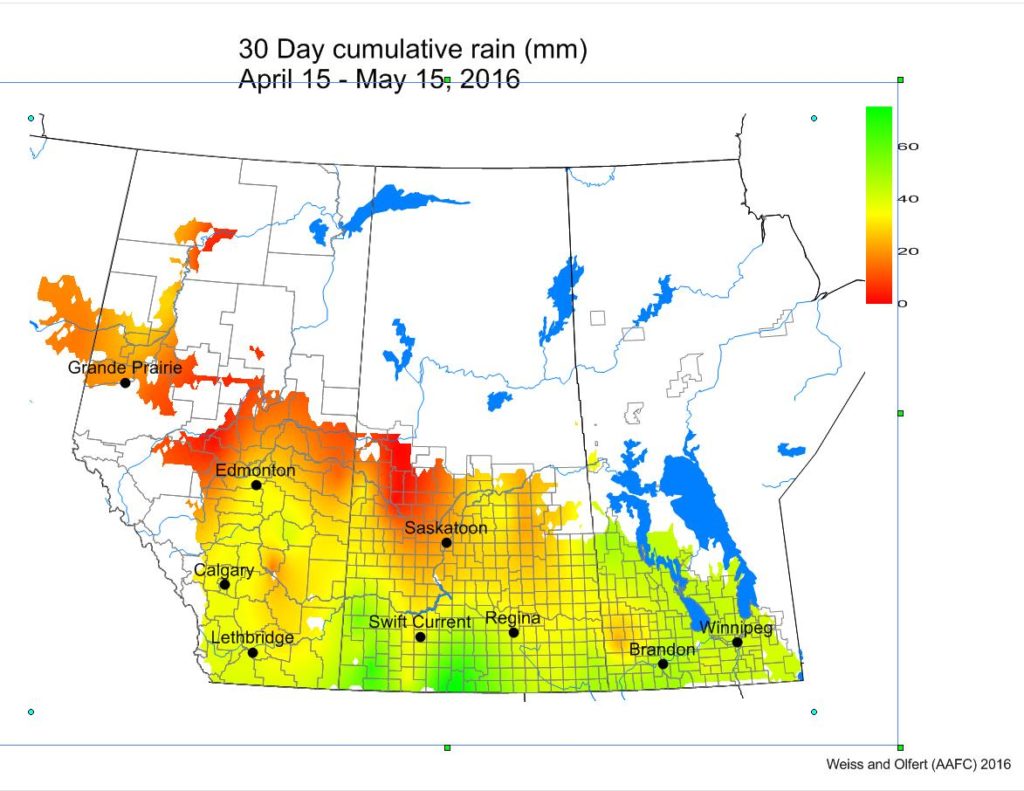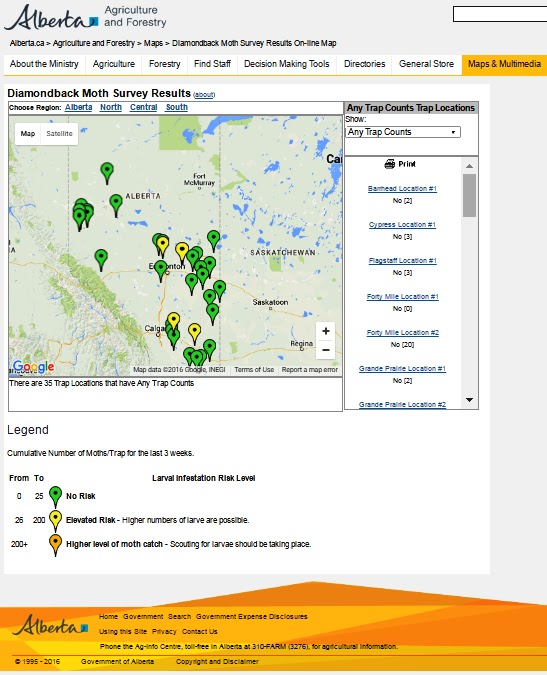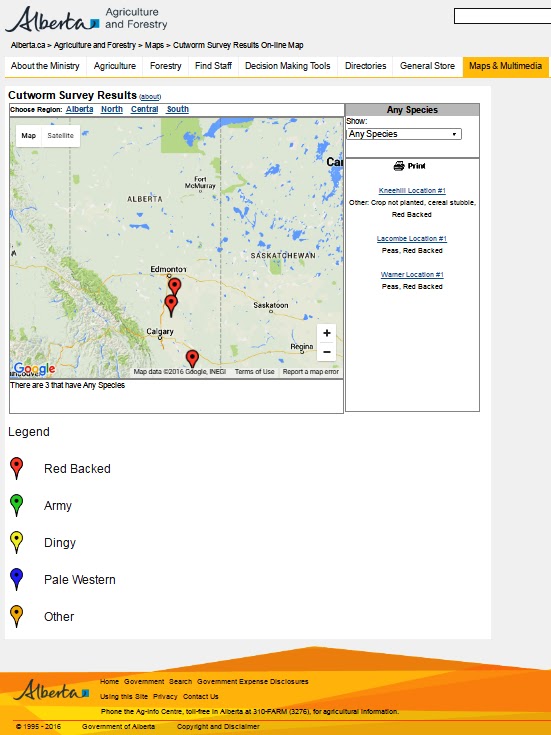Across the prairies, meteorological conditions for the period May 8-15, 2016, were similar to long term average values for the first half of May.
The average temperature was 8.7 °C (12 °C last week) and was 0.7 °C warmer than the average temperature for May 8-15.
This past week, rainfall amounts were minimal across most of Alberta and southern Manitoba. Most of Saskatchewan received normal or above normal rainfall. This week rainfall amounts greater than 30 mm were reported for a number of locations across southern Saskatchewan.
The 30-day rainfall amounts were similar to long term average values.
Compared to last week, soil moisture levels were predicted to improve across most of Saskatchewan. Low soil moisture values were predicted across central and northern Alberta.
Unfortunately, there were some cool temperatures just as seedlings were emerging….. The map below reflects the Lowest Temperatures occurring over the past 7 days across the prairies.
Whereas the map below reflects the Highest Temperatures occurring over the past 7 days across the prairies.
The maps above are all produced by Agriculture and Agri-Food Canada. Growers may wish to bookmark the AAFC Drought Watch Maps for the growing season.























